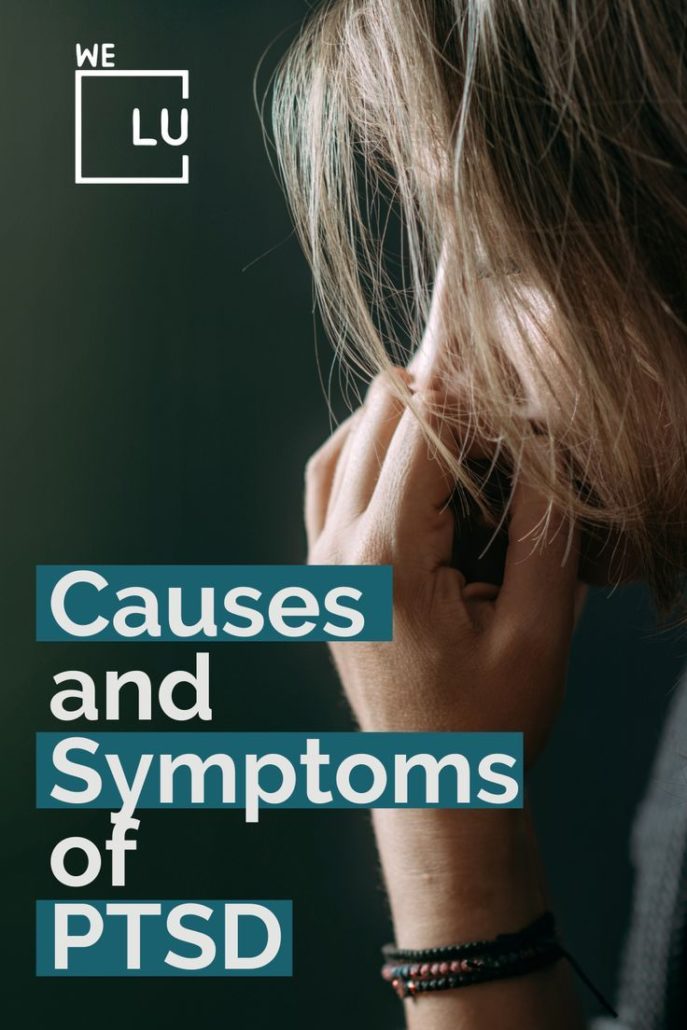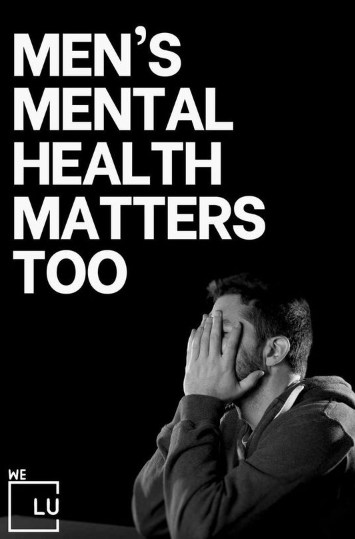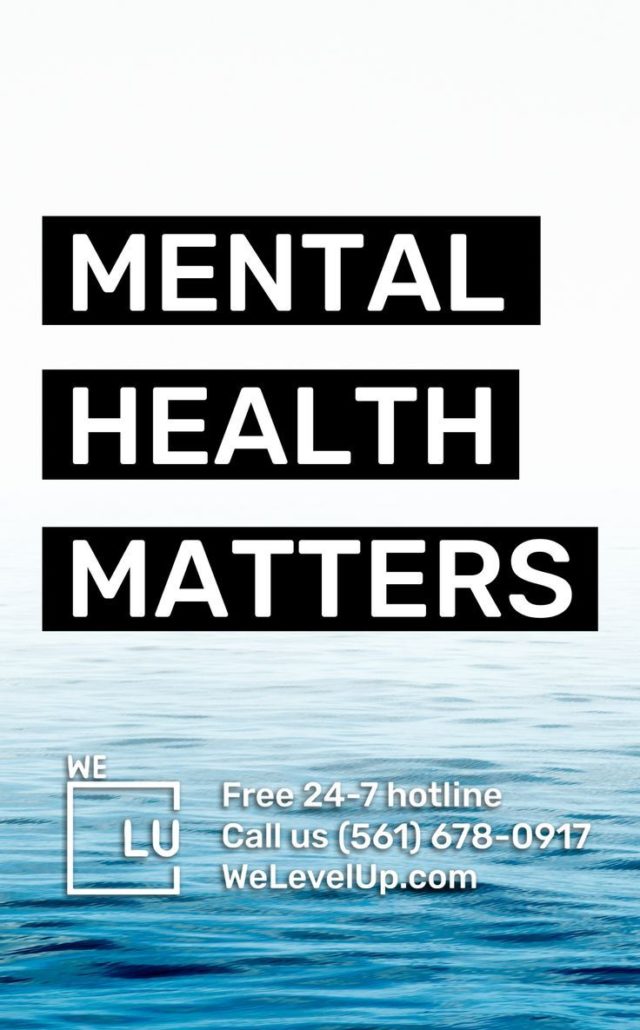What are the 17 Symptoms of PTSD?
The question “What are the 17 Symptoms of PTSD?” is about the various symptoms associated with Post-Traumatic Stress Disorder (PTSD). PTSD is a mental health condition that can develop in individuals who have experienced a traumatic event, such as combat, a natural disaster, a severe accident, physical or sexual assault, or other life-threatening situations.
There are several symptoms that individuals with PTSD might experience, and these symptoms can be categorized into four main clusters:
- Intrusion Symptoms involve reliving the traumatic event through distressing memories, nightmares, or flashbacks. Individuals might feel as if the traumatic event is happening again.
- Avoidance Symptoms: People with PTSD might avoid situations, places, people, or activities that remind them of the traumatic event. They may also avoid discussing the event and have difficulty recalling certain aspects.
- Negative Changes in Mood and Cognition: This cluster includes symptoms like feeling detached from others, experiencing negative emotions such as guilt, shame, or fear, having difficulty experiencing positive emotions, and having distorted thoughts about oneself or the world.
- Arousal and Reactivity Symptoms: These include being easily startled, feeling tense or on edge, having trouble sleeping, experiencing angry outbursts, and engaging in self-destructive behavior.
The exact number of symptoms may vary depending on the diagnostic criteria used, but “What are the 17 Symptoms of PTSD?” generally refers to the list of symptoms that individuals might experience across these four clusters.


Skip To:
Learn More:
Symptoms of PTSD in Women
Symptoms of PTSD in women can vary, but they generally encompass a range of emotional, cognitive, physical, and behavioral changes that result from experiencing a traumatic event. It’s important to note that PTSD symptoms can affect anyone regardless of gender, but there might be differences in how symptoms are experienced and expressed between men and women. Here are common symptoms of PTSD in women:
- Intrusive Memories: Women with PTSD may experience distressing and intrusive memories of the traumatic event. These memories can come in flashbacks, nightmares, or upsetting thoughts.
- Avoidance and Numbing: Women might go to great lengths to avoid reminders of the traumatic event. They may avoid certain places, people, or situations that trigger distressing memories. Additionally, they might experience emotional numbness or a sense of detachment from others.
- Negative Thoughts and Feelings: Due to the trauma, women may develop negative beliefs about themselves, others, or the world. They might feel intense guilt, shame, or anger and lose interest in activities they once enjoyed.
- Hyperarousal: Hyperarousal symptoms involve being easily startled, having a heightened startle response, and feeling constantly on edge. Women might have difficulty sleeping and experience irritability or anger.
- Hypervigilance: Women with PTSD might be hypervigilant about potential environmental threats. They may be overly watchful and constantly scan their surroundings for signs of danger.
- Physical Symptoms: Physical symptoms such as headaches, stomachaches, and other stress-related bodily discomforts can be present in women with PTSD.
- Dissociation: Some women may experience dissociative symptoms, where they feel disconnected from their own bodies or surroundings. This can manifest as feeling spaced out or detached from reality.
- Emotional Regulation: Women might struggle with regulating their emotions, leading to emotional outbursts, mood swings, or difficulty managing intense emotions.
- Relationship Challenges: PTSD can impact relationships, leading to difficulties in forming and maintaining connections. Women might isolate themselves or have trouble trusting others.
- Parenting Challenges: For mothers, PTSD can affect parenting, making it difficult to be emotionally present and engaged with their children.
It’s important to seek help if any of these symptoms are causing significant distress or impairment in daily functioning. Mental health professionals can provide proper assessment, diagnosis, and treatment for PTSD, which might involve therapies like cognitive-behavioral therapy (CBT), exposure therapy, and in some cases, medication.
Get Help. Get Better. Get Your Life Back.
Searching for Accredited Dual Diagnosis Mental Health Centers Near You?
Even if therapy failed previously, or are in the middle of a difficult crisis, we stand ready to support you. Our trusted behavioral health specialists will not give up on you. When you feel ready or just want someone to speak to about counseling alternatives to change your life call us. Even if we cannot assist you, we will lead you to wherever you can get support. There is no obligation. Call our hotline today.
FREE 24/7 Dual Diagnosis Mental Health Services HotlinePTSD Fact Sheet
What is PTSD? PTSD is a mental health condition that can develop in individuals who have experienced or witnessed traumatic events. These events could be life-threatening, involve serious harm, or result in intense fear, horror, or helplessness.
Symptoms of PTSD: Symptoms can vary and may include:
- Intrusive memories, flashbacks, or nightmares about the traumatic event.
- Avoidance of reminders of the trauma.
- Adverse changes in thoughts and mood, such as persistent negative beliefs or distorted thoughts about oneself or others.
- Changes in physical and emotional reactions, including heightened arousal, irritability, difficulty concentrating, and exaggerated startle response.
Causes: PTSD can result from various traumatic experiences, including:
- Combat exposure.
- Physical or sexual assault.
- Natural disasters.
- Serious accidents.
- Witnessing violence or death.
- Childhood abuse or neglect.
Importance of Seeking Help: Untreated PTSD can lead to various adverse outcomes, including substance abuse, relationship problems, and reduced quality of life. Seeking professional help can lead to symptom management, improved coping skills, and overall well-being.
PTSD Statistics
Post-Traumatic Stress Disorder (PTSD) is a complex mental health condition that can develop after an individual experiences a traumatic event. Traumatic events can range from combat and accidents to sexual assault and natural disasters. PTSD can affect anyone, regardless of age, gender, or background. Understanding the statistics related to PTSD helps shed light on the prevalence, impact, and challenges associated with this condition.
- Prevalence: The prevalence of PTSD varies based on factors such as the population studied and the type of traumatic events. In the general population, the estimated lifetime prevalence of PTSD is around 6-9%. Among specific groups, such as veterans, first responders, and survivors of sexual assault or natural disasters, the prevalence can be higher.
- Gender Differences: Women are generally more likely to experience PTSD than men. This is partly due to the higher rates of exposure to certain types of trauma, such as sexual assault.
- Trauma Types: PTSD can result from various traumatic events, including combat, sexual assault, physical assault, accidents, natural disasters, and more. The likelihood of developing PTSD can be influenced by the nature of the trauma and the individual’s characteristics.
- Age of Onset: PTSD can develop at any age following a traumatic event. However, it’s been observed that symptoms often begin within three months of the traumatic event. Delayed onset, where symptoms appear six months or more after the trauma, is also possible.
- Comorbidity: PTSD is frequently associated with other mental health conditions, such as depression, anxiety disorders, and substance use disorders. Addressing these co-occurring conditions is essential for effective treatment.
7.7 million
Approximately 7.7 million adults in the United States have PTSD in a year.
Source: NIMH
1 in 4 children
Nearly 1 in 4 children experience some form of maltreatment, including physical abuse, neglect, or emotional abuse.
Source: CDC
1 in 3 women
About 1 in 3 women have experienced physical or sexual violence in their lifetime.
Source: WHO
Symptoms of PTSD in Men
Symptoms of PTSD in men can manifest in various ways, although they generally encompass emotional, psychological, physical, and behavioral changes resulting from exposure to a traumatic event. While the symptoms themselves are similar to those experienced by anyone with PTSD, there might be some differences in how men express and cope with these symptoms due to social and cultural factors.
Here are common PTSD symptoms in men:
- Flashbacks and Intrusive Memories: Vivid, distressing memories of the traumatic event.
- Avoidance Behavior: Efforts to avoid triggers, discussions, or reminders of the trauma.
- Emotional Numbing: Feeling emotionally detached and experiencing a limited range of emotions.
- Irritability and Anger: Heightened irritability, anger, or aggression.
- Hyperarousal: Easily startled, constantly on edge, disrupted sleep.
- Social Withdrawal: Isolation from social interactions and relationships.
- Physical Symptoms: Headaches, muscle tension, and stress-related bodily discomfort.
- Work and Performance Issues: Difficulty concentrating, increased absenteeism.
- Substance Use: Turning to alcohol or drugs to cope with symptoms.
- Emotional Detachment: Suppressing emotions and feeling emotionally distant.

It’s important to recognize that these symptoms can vary widely among individuals. Seeking professional help from mental health providers experienced in treating PTSD is crucial for proper assessment, diagnosis, and effective treatment.

End the Emotional Pain. Get Your Life Back.
Feeling Depressed, Anxious or Struggling with Mental Health Illness? Get Safe Comfortable Mental Health Dual Diagnosis High-Quality Therapy From Counselors That Care. Begin Your Recovery Now.
Hotline (855) 940-612517 Symptoms of PTSD
What is PTSD Symptoms?
- Intrusive distressing memories, thoughts, or flashbacks of the traumatic event.
- Recurrent nightmares related to the traumatic event.
- Intense psychological distress when exposed to reminders of the traumatic event.
- Physiological reactions (such as rapid heartbeat, sweating) when exposed to reminders of the trauma.
- Avoid thoughts, feelings, conversations, places, or people associated with the trauma.
- Avoid activities, places, or situations that trigger trauma memories.
- Inability to recall important aspects of the traumatic event.
- Persistent negative beliefs or expectations about oneself, others, or the world.
- Persistent distorted blame of oneself or others for causing the traumatic event.
- Persistent negative emotional state (e.g., fear, anger, guilt, shame).
- Markedly diminished interest or participation in significant activities.
- Feeling detached or estranged from others.
- Difficulty experiencing positive emotions (anhedonia).
- Irritable behavior and angry outbursts with little or no provocation.
- Reckless or self-destructive behavior.
- Hypervigilance, feeling constantly on guard or jumpy.
- Exaggerated startle response, being easily startled by a noise or unexpected touch.
It’s important to remember that experiencing some of these symptoms after a traumatic event is normal, but when these symptoms persist and interfere with daily functioning for an extended period of time (typically more than a month) and cause significant distress, they might indicate the presence of PTSD. If you or someone you know is struggling with these symptoms, it’s advisable to seek help from a mental health professional for assessment and support.
First-class Facilities & Amenities
World-class High-Quality Mental Health Services & Behavioral Health Substance Abuse Treatment
Rehab Centers TourRenowned Mental Health Centers. Serene Private Facilities. Inpatient Rehab Programs Vary.
Mental Health Helpline (855) 940-6125Proven recovery success experience, backed by a Team w/ History of:
15+
Years of Unified Experience
100s
5-Star Reviews Across Our Centers
10K
Recovery Successes
- Comprehensive Dual-Diagnosis Treatment
- Complimentary Family & Alumni Programs
- Coaching, Recovery & Development Events
- Comfortable Onsite Medical Detox Center
PTSD Physical Symptoms
Physical symptoms of PTSD can manifest as a result of the body’s physiological response to stress and trauma. These symptoms can vary from person to person and may include:

- Headaches: Tension-related or migraines.
- Stomachaches: Digestive discomfort due to stress.
- Muscle Tension: Tightness in neck, shoulders, and back.
- Fatigue: Persistent tiredness.
- Sleep Disturbances: Trouble sleeping or restless sleep.
- Rapid Heartbeat: Increased heart rate under stress.
- Sweating: Profuse sweating during anxiety.
- Shallow Breathing: Rapid or shallow breathing.
- Dizziness: Feeling lightheaded during stress.
- Hypervigilance: Intense environmental awareness.
Physical symptoms can often be interconnected with emotional and psychological symptoms of PTSD. If you’re experiencing these symptoms and suspect they might be related to trauma or stress, seeking support from healthcare professionals and mental health experts is recommended.
Signs and Symptoms of PTSD
These signs and symptoms of Post-Traumatic Stress Disorder (PTSD) can vary in intensity and may not be present in every individual with PTSD. It’s important to note that seeking professional help is advisable if these symptoms persist, cause significant distress, or interfere with daily functioning. Therapeutic interventions and support from mental health professionals can help manage and alleviate the impact of PTSD symptoms.
| Category | Signs and Symptoms |
|---|---|
| Intrusion | Flashbacks, intrusive memories |
| Avoidance | Avoidance of triggers, conversations |
| Negative Changes | Negative thoughts, guilt, detachment |
| Arousal | Irritability, hypervigilance, startle response |
| Physical | Headaches, muscle tension, sleep disturbances |
- Intrusion:
- Flashbacks: Vivid and distressing recollections of the traumatic event that can feel as if the event is happening again.
- Intrusive Memories: Unwanted and recurrent memories of the trauma that can disrupt daily life.
- Avoidance:
- Avoidance of Triggers: Efforts to avoid people, places, or situations that remind the individual of the trauma.
- Avoidance of Conversations: Avoid discussing or thinking about the traumatic event.
- Negative Changes:
- Negative Thoughts: Developing negative beliefs about oneself, others, or the world due to the trauma.
- Feelings of Guilt: Experiencing intense guilt or shame related to the trauma.
- Emotional Detachment: Feeling emotionally numb, disconnected, or detached from others.
- Arousal:
- Irritability: Frequent irritability, outbursts of anger, or aggressive behavior.
- Hypervigilance: Being overly alert and watchful for potential threats or danger in the environment.
- Exaggerated Startle Response: Reacting strongly to sudden or unexpected noises or touch.
- Physical:
- Headaches: Recurrent headaches, which can be tension-related or migraines.
- Muscle Tension: Feeling tense or having muscle stiffness, often in the neck, shoulders, or back.
- Sleep Disturbances: Trouble falling asleep, staying asleep, or experiencing restful sleep.
World-class, Accredited, 5-Star Reviewed, Effective Mental Health Dual Diagnosis Programs. Complete Integrated Inpatient Rehab with Free Post Discharge Therapy Planning.
CALL (855) 940-6125End the Emotional Pain Rollercoaster. Gain Stability & Happiness Through Recovery Treatment. Start Mental Health Counseling Today. Get Free No-obligation Guidance by Behaviroal Health Specialists Who Understand Mental Health Recovery.
PTSD Episode Symptoms
During a period of increased symptoms, individuals with PTSD might experience the following:
- Intense Flashbacks: Vivid and distressing re-experiences of the traumatic event can make it feel like the trauma is happening again.
- Emotional Overwhelm: Feeling overwhelmed by intense emotions such as fear, anger, or sadness.
- Hypervigilance: Being alert and watchful for potential threats can increase anxiety and physical tension.
- Avoidance Behavior: Strong efforts to avoid anything that could trigger memories of the traumatic event.
- Increased Irritability: Heightened irritability, outbursts of anger, or mood swings.
- Physical Discomfort: Experiencing physical symptoms like headaches, stomachaches, or muscle tension due to heightened stress.
- Sleep Disturbances: Trouble falling, staying, or experiencing nightmares related to the trauma.
- Loss of Concentration: Difficulty focusing or concentrating on tasks due to preoccupation with traumatic memories.

In the context of PTSD, a “episode” might refer to a period of time when someone with PTSD experiences a significant increase in symptoms. During these episodes, the individual may feel overwhelmed by memories, emotions, and physiological reactions related to the traumatic event. It’s crucial to note that the term “episode” is not a clinical term used in the diagnostic criteria for PTSD but can be colloquially used to describe intensified symptom experiences.
Chronic PTSD Symptoms
Chronic PTSD symptoms refer to the persistent and enduring nature of Post-Traumatic Stress Disorder (PTSD) symptoms that continue for an extended period of time, typically beyond three months after the traumatic event. These symptoms can significantly impact an individual’s daily life and overall well-being. Here are common chronic PTSD symptoms:
- Intrusive Thoughts and Memories: Distressing and unwanted thoughts, memories, or flashbacks of the traumatic event that continue to resurface over time.
- Avoidance and Numbing: Ongoing efforts to avoid reminders of the trauma, as well as emotional numbness and detachment from people and activities.
- Negative Changes in Mood and Thoughts: Persistent negative beliefs about oneself, others, or the world. Chronic PTSD can lead to a pessimistic outlook, feelings of guilt, shame, or hopelessness.
- Arousal and Reactivity: Sustained hyperarousal, including exaggerated startle responses, hypervigilance, and difficulties with concentration and sleep.
- Physical Symptoms: Chronic physical symptoms such as headaches, muscle tension, and gastrointestinal issues that may be linked to the ongoing stress response.
- Emotional Dysregulation: Continued difficulty managing emotions, leading to mood swings, irritability, and intense emotional reactions.
- Interpersonal Challenges: Struggles in forming and maintaining relationships due to emotional detachment, mistrust, or difficulty expressing emotions.
- Impact on Work and Functioning: Persistent difficulties in work, school, or other daily activities due to the ongoing interference of PTSD symptoms.
- Substance Use and Self-Destructive Behavior: Chronic PTSD can increase the risk of engaging in substance abuse or other self-destructive behaviors as a way to cope with distressing symptoms.
- Diminished Quality of Life: Individuals with chronic PTSD often report a reduced quality of life, experiencing challenges in overall well-being and life satisfaction.
It’s important to recognize that chronic PTSD can have a profound impact on an individual’s life, but treatment options are available to help manage and alleviate symptoms. Mental health professionals can provide support and interventions such as psychotherapy, medication, and various therapeutic techniques to assist individuals in coping with chronic PTSD symptoms. If you or someone you know is experiencing chronic PTSD symptoms, seeking professional help is strongly recommended.
Experience Transformative Recovery at the We Level Up Treatment Center.
See our authentic success stories. Get inspired. Get the help you deserve.



Start a New Life
Begin with a free call to a behavioral health treatment advisor. Learn more about our dual-diagnosis programs. The We Level Up treatment center network delivers recovery programs that vary by each treatment facility. Call to learn more.
- Personalized Care
- Caring Accountable Staff
- World-class Amenities
- Licensed & Accredited
- Renowned w/ 5-Star Reviews
We’ll Call You
Popular “What are the 17 Symptoms of PTSD?” FAQs
-
What is PTSD Symptoms?
PTSD symptoms can be temporary, especially in the immediate aftermath of a traumatic event.
-
What are the 17 Symptoms of PTSD?
The “17 Symptoms of PTSD” phrasing might refer to a list of symptoms used for illustrative purposes. However, the actual symptoms can vary and are categorized into clusters like intrusion, avoidance, negative mood, and arousal.
-
What are the clusters of symptoms in PTSD?
PTSD symptoms are typically grouped into four clusters: intrusion, avoidance, negative changes in mood and thoughts, and arousal/reactivity. These clusters encompass a range of emotional, cognitive, and physical symptoms.
8 Steps & Tips for Maintaining Your Mental Wellbeing Informative Video
Video Script
We at We Level Up FL are dedicated to personalized mental health services tailored to each person’s unique needs. Our experienced team collaborates closely with clients to create therapy programs that address their challenges and align with their goals. With empathy and support, we empower individuals to take an active role in their mental health journey by providing tools and strategies. We encourage exploration, self-discovery, and growth in a safe and nurturing environment. We understand that everyone is different, so we listen attentively and develop customized therapy plans based on individual concerns, strengths, and aspirations.
Search What are the 17 Symptoms of PTSD? Drug & Alcohol Rehab / Detox & Mental Health Topics & Resources
Sources
- “Trauma and Recovery: The Aftermath of Violence – From Domestic Abuse to Political Terror” by Judith Herman, M.D. Learn More: What are the 17 Symptoms of PTSD
- Centers for Disease Control and Prevention (CDC) – www.cdc.gov Learn More: What are the 17 Symptoms of PTSD
- National Institute of Mental Health (NIMH) – www.nimh.nih.gov Learn More: What are the 17 Symptoms of PTSD
- World Health Organization (WHO) – www.who.int Learn More: What are the 17 Symptoms of PTSD
- “Healing Trauma: A Pioneering Program for Restoring the Wisdom of Your Body” by Peter A. Levine, Ph.D. Learn More: What are the 17 Symptoms of PTSD
- Trippany RL, Helm HM, Simpson L. Trauma Reenactment: Rethinking Borderline Personality Disorder When Diagnosing Sexual Abuse Survivors. Journal of Mental Health Counseling. Published online March 30, 2006:95-110. doi:10.17744/mehc.28.2.ef384lm8ykfujum5 Learn More: What are the 17 Symptoms of PTSD
- Davis TE III, Ollendick TH, Öst LG. Intensive Treatment of Specific Phobias in Children and Adolescents. Cognitive and Behavioral Practice. Published online August 2009:294-303. doi:10.1016/j.cbpra.2008.12.008 Learn More: What are the 17 Symptoms of PTSD
- Watson S, Chilton R, Fairchild H, Whewell P. Association between Childhood Trauma and Dissociation Among Patients with Borderline Personality Disorder. Aust N Z J Psychiatry. Published online May 2006:478-481. doi:10.1080/j.1440-1614.2006.01825.x Learn More: What are the 17 Symptoms of PTSD
- Etherington K. Supervising counsellors who work with survivors of childhood sexual abuse. Counselling Psychology Quarterly. Published online December 2000:377-389. doi:10.1080/713658497 Learn More: What are the 17 Symptoms of PTSD
- Kendall-Tackett K. The health effects of childhood abuse: four pathways by which abuse can influence health. Child Abuse & Neglect. Published online June 2002:715-729. doi:10.1016/s0145-2134(02)00343-5 Learn More: What are the 17 Symptoms of PTSD